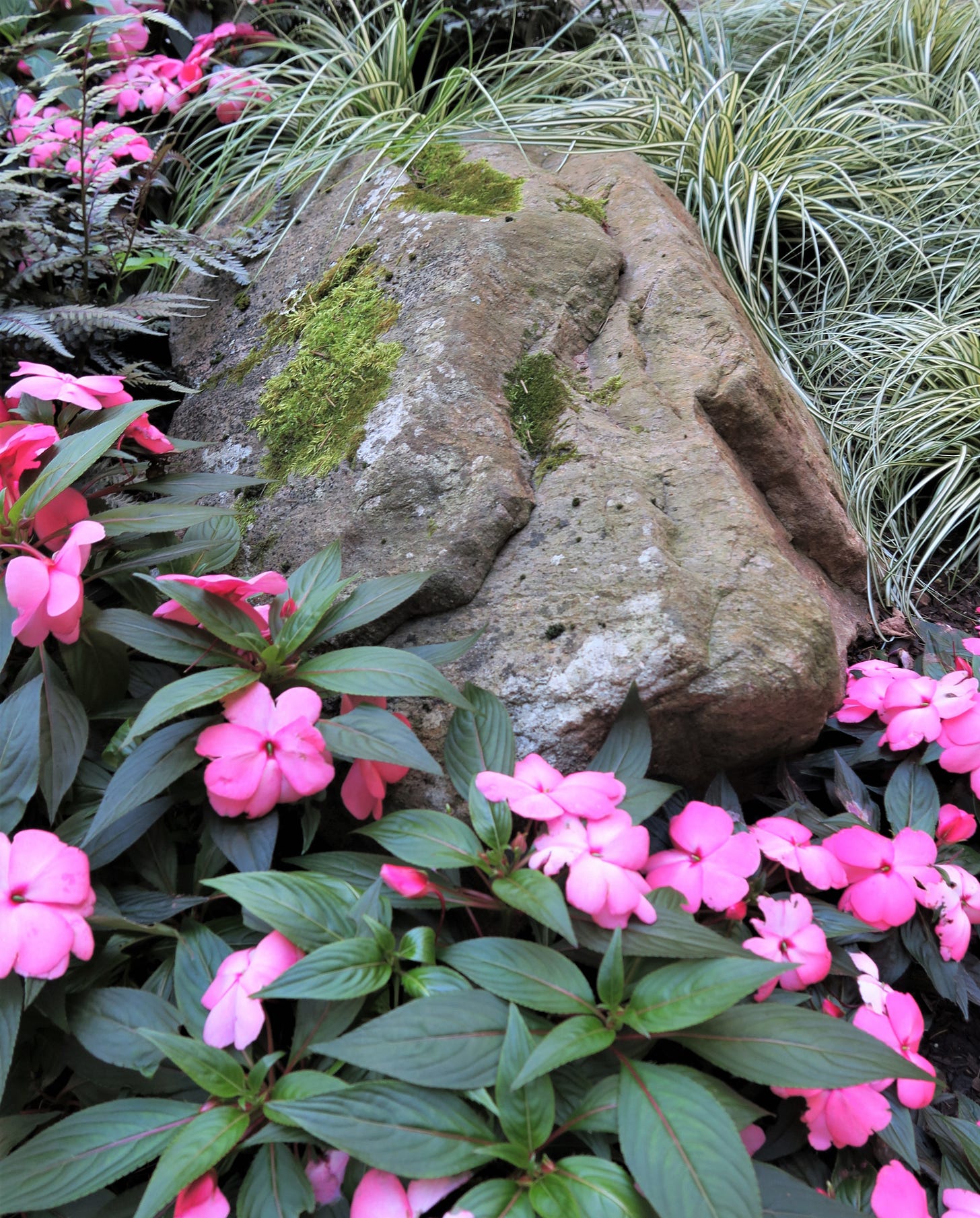Rocks. Flowers. Action.
Add some rocks to make your flowers sing

Flower gardens can be quiet places of relaxation and renewal. And rocks, along with the flowers, double that feeling. Why rocks? Because they are Nature’s most enduring material and add a durable, quiet presence to the landscape. Rocks ground us and flowers elevate us. It is this dynamic juxtaposition that makes this arrangement so compelling.
Rocks are a solid counterbalance to short-lived flower displays.
There are many ways to combine rocks with flowers. Traditional rock gardens are one example but there are other design options. The following tips highlight the contrast of hard natural stone and soft flowers.
You can place one or more large rocks within a flower bed or at its edges, or both.
Highlight the flowers that drape or ramble such as Geranium ‘Rozanne’ by placing a rock next to them. A definite eye catcher.
Plant a group of tall growing flowers like Monarda or Liatris behind a large rock or plant low growing ones in front at its base.
You can also set several long, narrow stones vertically within a flower bed to act as dramatic “standing stones.”

I prefer to collect and use rocks from a garden’s site rather than bring them in from somewhere else. These native rocks resonate with the land. I know it is not always possible to do this, but it is a good practice if you have a lot of stone at hand.
It may sound odd, but I believe rock energy is palpable— I have turned away certain rocks if they do not seem “comfortable” in a garden.

Plant your rocks as you would your flowers, and at least one-quarter of a rock should be buried. And find the ‘face’ of the rock as you place it. It makes such a difference in the overall look of a rock garden.
Did you know?
The art of the stone arrangement in Japan is called sute-ishi. ‘Sute-ji ’ means build and ‘ishi’ means stone. It was considered the main element of a gardener's work.
And, as you place the rocks, also make sure that the soil is amended for the kinds of flowers or foliage plants you are planting. The soil is so important - it determines everything in a landscape. And rocks are a plus for pollinator gardens because rocks serve as warming spots for butterflies, our all-important flower pollinators, to bask on and heat up in the summer sun.

If you have a small slope and a supply of stones, you can convert it into a rock garden featuring low-growing flowering plants. You should add several larger stones to act as anchors to give a garden some visual weight and create interest. Also consider adding a curving narrow path leading through the rocks and plants. It is for tending to the plants and leads the eye through the garden. A small path is a good way to create a unified scene. 
I remade one rock garden and luckily, they had deer fencing. I added blue agapanthus (not hardy where I live) with the existing daylilies.The large rock outcrop acted as a striking backdrop to the dainty flower blossoms.

Through careful selection and placement of solid, natural rocks you can create a garden that helps us view Nature— and our time with her— a little differently. As Lily Tomlin said, “For fast acting relief, slow down.” Rocks remind us to slow down.
Thank You for being a subscriber to Gardentopia! And feel free to share this with others. Or even better, comment or question. I love to hear from you.



This post touched all the right notes for me. I’m in the process of adding rocks, large, larger and largest, to an existing bed. Me aim is to connect the bed which is in front of the house to the enormous boulders that surround it. I’ll definitely include some annuals so your suggestions are very helpful.
You rock, Jan! You inspire me to look at rocks in a new way.